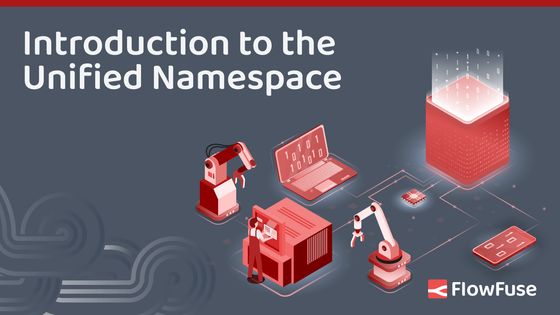Introduction to the Unified Namespace
Making data available for Industry 4.0 use-cases

As your organization is generating more data there’s key architectural decisions to be made to ensure the full value can be unlocked and you’re leveraging not just the tip of the iceberg. The Unified Namespace (UNS) provides a blueprint to allow data to be consumed by many data-consumers. FlowFuse helps you manage this migration and the operationalization of your data.
To facilitate a many to many connection between data producers and data consumers, there are two changes to be made to your architecture:
- Data transport through a hub-and-spokes model
- Set structure of the Data
# Hub and spokes model replaces Point to Point
Traditionally, for example web servers serving web pages, the client requests a page from a server. This is a point to point connection between those two parties.

For the same data to be transmitted to a new data consumer, the consumer needs to make another request to obtain the data. This works great when you know what data you need for building your solution, and if you know where to get it.
However, in manufacturing it’s not always possible to know up front who will need your data. Some machines are built and placed years before another machine would like to interact with the generated data. There might be many consumers for the same data set. Lastly; consumers might not know when to fetch new data points, and thus will try on a cycle or need another mechanism to understand if new data is available.
This is why a hub and spoke model should be employed. For each data source or data producer, a connection is made to a central hub; generally called a broker.

# Structured data
When many producers are connected to many data consumers, but not directly, the data producer needs to provide insight into what the events can be and will contain. It cannot, nor should even if it could, tailor the event’s data structure for a consumer so there’s decoupling on an architecture level. Structured data makes information, without structure the consumer receives mere bytes.
This means that a schema for each event should be created and maintained. A schema which both the producer and consumer can read and validate each event against. As such a common Schema Definition Language (SDL) is chosen to provide clarity of how the data is structured, how it can be parsed, and in some cases also what it means for the developer.
Written By:
Published on:
Related Articles:
- Node-RED in a Unified Namespace Architecture
- Node-RED: The perfect adapter and middleware for your UNS
- Unified Namespace: When to Use It, and When to Choose Something Else
- Selecting a broker for your Unified Namespace
- Data Modeling for your Unified Namespace